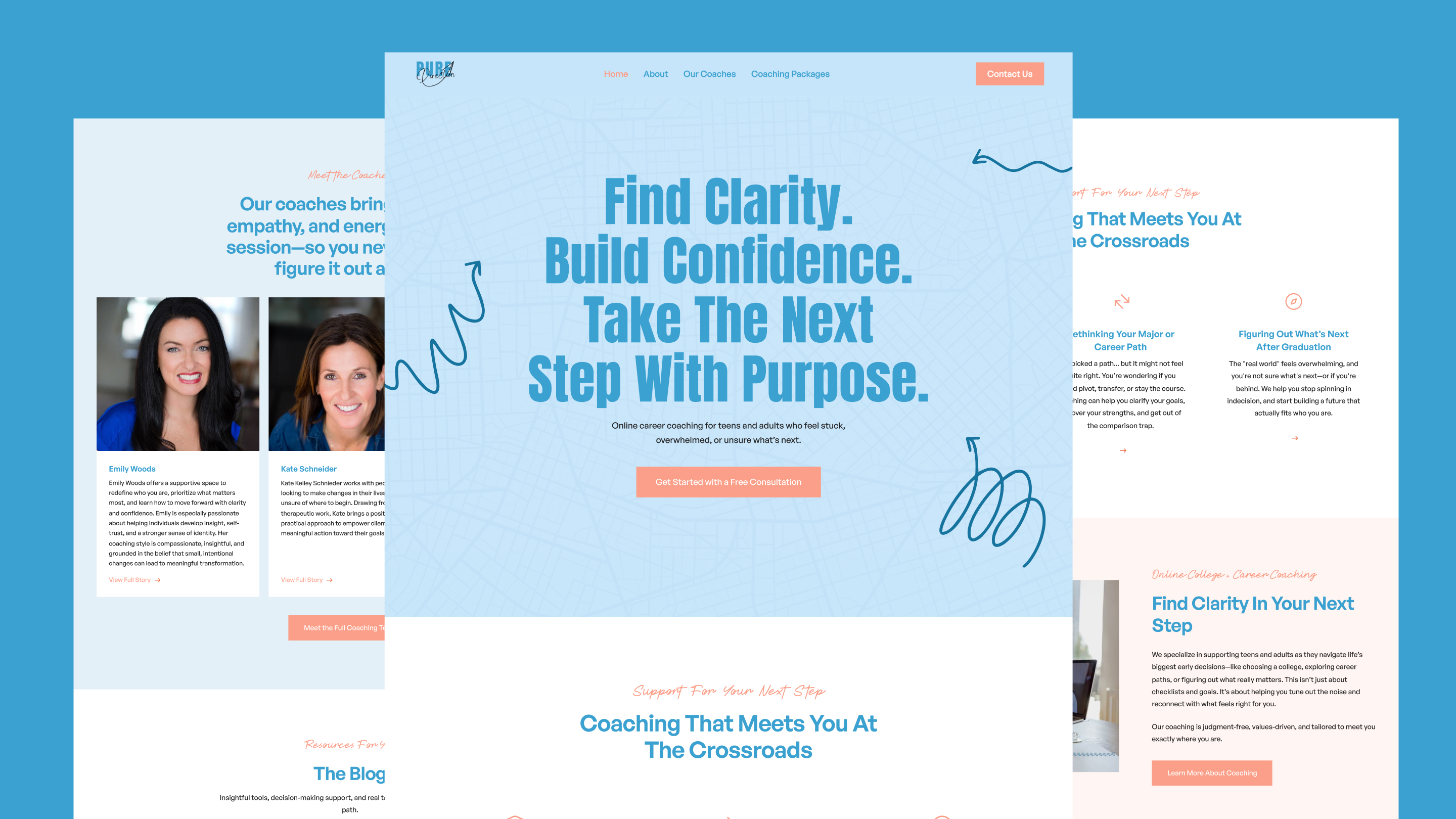Design
Designing eCommerce Sites That Convert Visitors into Customers

In today's digital age, a well-designed eCommerce website is not just a luxury—it's an essential. For agencies and marketing directors, understanding what makes an eCommerce website effective can be the difference between a thriving online store and one that struggles to make sales. This blog post will guide you through the critical elements of compelling eCommerce website design, with actionable insights to help you create sites that attract and convert customers.
Why eCommerce Website Design Matters
The first impression is everything. When visitors land on your eCommerce site, you have mere seconds to capture their attention. A poorly designed website can turn potential customers away before they even browse your products. On the other hand, a well-thought-out site can increase customer retention, encourage repeat visits, and ultimately drive more sales. Let's dive into the essential elements that make an eCommerce website successful.
User-Centric Design
Putting the Customer First
The foundation of good eCommerce design is a user-centric approach. This means understanding and prioritizing the needs and preferences of your target audience. Conduct user research to gather insights into how your customers interact with websites, and use this information to inform your design decisions. A user-friendly interface can significantly enhance the shopping experience, making it easier for customers to find what they need and complete purchases.
Simplifying Navigation
Clear and intuitive navigation is crucial for keeping visitors engaged. Ensure your menu is easy to understand and accessible from any page. Categorize products logically, and use clear labels and drop-down menus to help users find exactly what they're looking for. Incorporate a search bar with auto-suggestions to further streamline the shopping experience.
Mobile Responsiveness
With more people shopping on mobile devices than ever before, a mobile-responsive design is non-negotiable. Your site should function seamlessly across all devices, providing a consistent experience whether users are browsing on a desktop, tablet, or smartphone. Use responsive design techniques to ensure your site adapts to various screen sizes and orientations.
Visual Appeal
High-Quality Images
Visuals play a significant role in eCommerce. High-quality images of your products from multiple angles help customers make informed purchasing decisions. Use zoom functionality to allow users to see details up close. Lifestyle images showing the product in use can also be very effective in conveying its value.
Consistent Branding
Your eCommerce site should reflect your brand's identity consistently. Use your brand's colors, fonts, and logo throughout the site to create a cohesive look. Consistency in design elements builds trust and makes your brand more recognizable.
Eye-Catching Design Elements
Utilize eye-catching design elements like banners, sliders, and promotional graphics to highlight special offers and new arrivals. However, be mindful not to clutter the site; too many distractions can overwhelm visitors and detract from the user experience.
Effective Call-to-Actions (CTAs)
Strategically Placed CTAs
CTAs are essential for guiding users towards desired actions, such as adding items to their cart or signing up for a newsletter. Place CTAs strategically throughout your site, using contrasting colors to make them stand out. Ensure the text is clear and action-oriented, like "Buy Now," "Shop the Sale," or "Join Our Community."
Encouraging Conversions
Use urgency and scarcity to encourage conversions. Limited-time offers, countdown timers, and low stock alerts can motivate customers to make a purchase quickly. Make sure your CTAs convey a sense of urgency without being overly aggressive.
A/B Testing for Optimization
Continually optimize your CTAs through A/B testing. Experiment with different colors, text, and placements to see what works best for your audience. Use analytics to track performance and make data-driven decisions.
Seamless Checkout Process
Reducing Friction
A complicated checkout process can lead to cart abandonment. Simplify the process by minimizing the number of steps required to complete a purchase. Allow guest checkouts to avoid forcing users to create an account, and offer multiple payment options to cater to different preferences.
Transparent Pricing
Be transparent about pricing from the outset. Hidden fees and unexpected charges can frustrate customers and lead to cart abandonment. Display shipping costs, taxes, and any additional fees upfront to build trust and reduce surprises at checkout.
Secure Transactions
Security is paramount in eCommerce. Ensure your site uses SSL encryption to protect customer data. Display security badges and trust signals to reassure customers that their information is safe. A secure checkout process can enhance credibility and encourage more sales.
Informative Product Descriptions
Crafting Detailed Descriptions
Product descriptions should be detailed and informative, highlighting key features and benefits. Use clear, concise language to describe what makes the product unique. Include specifications, materials, dimensions, and any other relevant information to help customers make informed decisions.
Using Persuasive Language
Incorporate persuasive language to convey the value of your products. Use storytelling techniques to create an emotional connection with customers. Highlight how the product can solve a problem or enhance their lives.
Including Customer Reviews
Customer reviews add credibility and social proof to your product pages. Encourage satisfied customers to leave reviews, and display them prominently. Respond to reviews, both positive and negative, to show that you value customer feedback and are committed to improving your products and services.
Optimized for SEO
Keyword Research
Effective SEO starts with keyword research. Identify relevant keywords and phrases that your target audience is likely to search for. Use these keywords naturally in your product descriptions, category pages, and blog posts to improve your site's visibility in search engine results.
Meta Descriptions and Titles
Craft compelling meta descriptions and titles for each page on your site. These elements are crucial for SEO and can influence click-through rates. Use keywords strategically while ensuring the text is engaging and accurately represents the content on the page.
Structured Data Markup
Implement structured data markup to enhance your site's search engine visibility. Rich snippets, such as product ratings and prices, can make your listings more attractive in search results. Use schema markup to provide search engines with additional information about your products and improve your site's overall SEO performance.
Fast Loading Speeds
Importance of Speed
Loading speed is critical for user experience and SEO. Slow-loading pages can frustrate visitors and lead to higher bounce rates. Search engines also consider site speed when ranking websites, so optimizing for speed can improve your site's visibility.
Image Optimization
Optimize images to reduce load times without compromising quality. Use compression tools to minimize file sizes, and choose the appropriate file formats for different types of images. Implement lazy loading to ensure images load only when they come into the user's viewport.
Minimize HTTP Requests
Reduce the number of HTTP requests to speed up your site. Combine CSS and JavaScript files, use sprites for small images, and minimize the use of external resources. A streamlined site with fewer requests will load faster and provide a better user experience.
Engaging Content
Blog and Resource Center
Create a blog or resource center to provide valuable content to your audience. Share tips, tutorials, industry news, and product guides to engage visitors and establish your brand as an authority in your niche. Regularly updated content can also improve your site's SEO and drive more organic traffic.
Interactive Elements
Incorporate interactive elements like quizzes, polls, and calculators to engage users. These tools can provide personalized recommendations, enhance the shopping experience, and keep visitors on your site longer. Interactive content can also be shared on social media, driving more traffic to your site.
Video Content
Video content is highly engaging and can showcase your products in action. Create product demos, unboxing videos, and customer testimonials to build trust and provide valuable information. Embed videos on product pages and share them on social media to reach a wider audience.
Social Proof and Trust Signals
Building Trust with Customers
Trust is essential for eCommerce success. Display trust signals like security badges, money-back guarantees, and clear return policies to reassure customers. Highlight any awards or certifications your brand has received to build credibility.
Showcasing Customer Testimonials
Customer testimonials are powerful social proof. Feature testimonials on your homepage, product pages, and landing pages to show potential customers that others trust and love your products. Use real photos and names to add authenticity.
Leveraging Social Media
Leverage social media to build trust and engage with your audience. Share user-generated content, respond to comments and messages, and showcase behind-the-scenes glimpses of your brand. Social media can help humanize your brand and foster a sense of community.
Personalization
Tailoring the User Experience
Personalization can significantly enhance the user experience. Use data and analytics to tailor product recommendations, content, and offers to individual users. Personalized experiences can lead to higher engagement, satisfaction, and conversion rates.
Dynamic Content
Implement dynamic content to create a personalized shopping experience. Show different products, banners, and messages based on user behavior and preferences. Dynamic content can make your site feel more relevant and engaging.
Email Marketing
Use email marketing to deliver personalized content and offers directly to your customers' inboxes. Segment your email list based on customer behavior and preferences, and send targeted campaigns that resonate with each segment. Personalized emails can drive repeat purchases and build customer loyalty.
Analytics and Continuous Improvement
Tracking Performance
Use analytics tools to track your site's performance and gather insights into user behavior. Monitor key metrics like traffic, bounce rates, conversion rates, and average order value to understand how your site is performing.
Identifying Areas for Improvement
Analyze your data to identify areas for improvement. Look for patterns and trends that indicate potential issues, such as high bounce rates on specific pages or low conversion rates for certain products. Use this information to make data-driven decisions and optimize your site.
Continuous Testing and Optimization
Continuously test and optimize your site to improve the user experience and drive better results. Conduct A/B tests to experiment with different design elements, CTAs, and content. Use the insights gained from testing to make informed changes and keep your site performing at its best.
Conclusion
Creating a successful eCommerce website requires a thoughtful approach that prioritizes user experience, visual appeal, effective CTAs, and seamless functionality. By incorporating the elements discussed in this blog post, you can design an eCommerce site that not only attracts visitors but also converts them into loyal customers. Remember, the key to success lies in continuous improvement and staying attuned to the needs and preferences of your audience. Start implementing these strategies today and watch your eCommerce business thrive.














